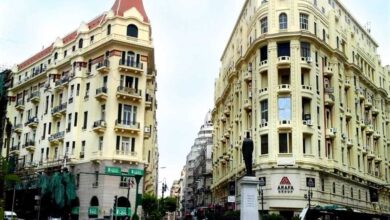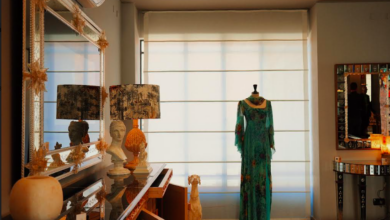
“We believe that it should be the PEOPLE who decide, the people who transformed Egypt through occupying Tahrir should now liberate the midan and permanently claim it as their own […] If we can talk down a regime, we can certainly TALK TO BUILD the symbol for our future,” read the open call for the Al-Tahrir Competition for building a revolutionary monument, launched in May 2011.
Several plans were drawn up by artists, architects and design firms. But the competition never materialized. The former ruling military council decided to erect the world’s highest flagpole in the name of the revolution; and, on their part, citizens continued to spontaneously appropriate Tahrir Square and its surrounding streets with graffiti, obelisks, sculptures and installations featuring the martyrs, as well as the revolution’s recurring memes. As tensions continued to escalate, numerous walls were set up around downtown Cairo and, recently, the presidential palace in Heliopolis.
Reacting to these issues, architect Samir El Kordy in collaboration with Pericentre projects imagined a revolutionary monument: a wall 20 meters high and 20 kilometers long marking the paths of revolutionary marches around key sites of state power in downtown Cairo. The monument, exhibited in PhotoCairo 5, was shown through a series of digitally constructed images and a somewhat literary narrative. It has been commissioned, according to the narration, by the very “regime” that protesters sought to topple.
“I put myself in the head of the SCAF [Supreme Council of the Armed Forces],” says Kordy. “[Their] goal while erecting walls around the city was to stop the flow of movement,” he explains. “I realized that the best way to exert control over that flow is by allowing it, giving the illusion of freedom.” That was Kordy’s starting point for the project.
“Monument of the Buzzwords,” as the architect named the work, is meant to crystallize and appropriate singular interpretations of revolutionary keywords like “change,” “people,” “nationhood” and “democracy” in a massive concrete structure. Unlike other walls and monuments, the meaning of “Monument of the Buzzwords” won’t be negotiated on its surface, as an anti-graffiti coating will be applied to preserve its “neutrality.”
With its disarming conceptual simplicity and technical perfection, the convincing aesthetic of “Monument of the Buzzwords” speaks for itself. Maps and panoramic images of downtown sites alternate with framed texts providing sets of pragmatic instructions that complement the work by guiding the narration in a nonlinear way.
“I decided to reject the design element and opt for a very symbolic choice,” says Kordy. “There is no moral purpose in this idea. It is the development of a coherent plan [on the part of the regime].”
“I was against showing the beauty of evil. But I also found it necessary to challenge my beliefs as a professional, reflecting on the power of architecture and on the architecture of power, which claims to be representing and honoring the will of the people,” he adds.
The plan of the monument implies a brutal invasion of public space. But the construction of the monument is justified as a reflection of the people’s will. The means justify the ends: elevating all citizens to the same level above the skyline, allowing them to enjoy a “positively democratic (if totalitarian) spatial experience,” the narration goes on, and whereby “all social distinctions between citizens are erased.”
Nevertheless, only those who conform to a certain standard defined by qualified security personnel will be allowed to enter the monument.
Kordy’s monument is incorporated into the urban fabric and paradoxically becomes part of the daily flow of people and vehicles in the city. “All old images of the city have been modified to include the monument as if it had always been there,” the narration continues, echoing the epic “1984” in which George Orwell wrote, “Who controls the past controls the future. Who controls the present controls the past.” And the viewer thus becomes suddenly aware of the possibility of such a nightmare materializing.
The work presented in PhotoCairo 5 is only part of a much wider collection of images and texts that Kordy produced in collaboration with a team of artists, photographers and designers. “Monument of the Buzzwords” was presented as a looped video of still images and texts on the occasion of “Right of Refusal,” a show that took place in the summer in Austria. “The process was equally interesting as the end result. The potential of the idea itself generates multiple expressions and ramifications for the project, and we allowed ourselves to experiment and produce a great amount of material from which we then chose a selection,” Kordy explains.
But to him, the framed images currently on display show an authority, and reinforce the idea in a way that the video may not have.
Kordy insists that he would have reacted to the events differently had he been an artist. “I’d rather avoid any political heaviness to the work and let it speak for itself,” he says. “Art is art. Architecture for me, on the other hand, should be politicized as it pertains to the public domain, which represents the authority’s power, claims and beliefs.”
One of the images, for instance, features a grid-like map of downtown Cairo’s streets, devoid of buildings and green areas. It includes pre-existing monuments, statues and symbols of power as if they were the only elements the regime saw worth representing on a map.
He argues that one is aware of the presence of those monuments without ever consciously noticing them. “They are present as a ghost image in the background, but they do not convey a shared meaning.” When he designed “Monument of the Buzzwords,” however, its massive presence on the streets and clear promotion of a specific narrative to the public makes it impossible to ignore and maybe even difficult to dispute the way different visions of what the revolution “should” mean have been contested over the past two years.
The sense of unity and shared values that characterized the utopian 18 days in Tahrir Square have been overshadowed by the complexity of Egypt’s transitional period and conflicting visions for the future. Those divisions emerged visibly with the walls and barriers that have reshaped the city, acting as a constant reminder of the battles that are taking place on both sides of the walls. Only a few weeks ago, a new wall appeared right in front of the statue of Simon Bolivar, hero of the Venezuelan and Latin American struggle for independence. The homonymous square has been added to the list of symbolic sites where the real battle continues. Perhaps many ignore that Bolivar once said, “All who have served the Revolution have plowed the sea” — they have achieved the impossible and fulfilled their dream.
A version of this piece was published in Egypt Independent's weekly print edition.





